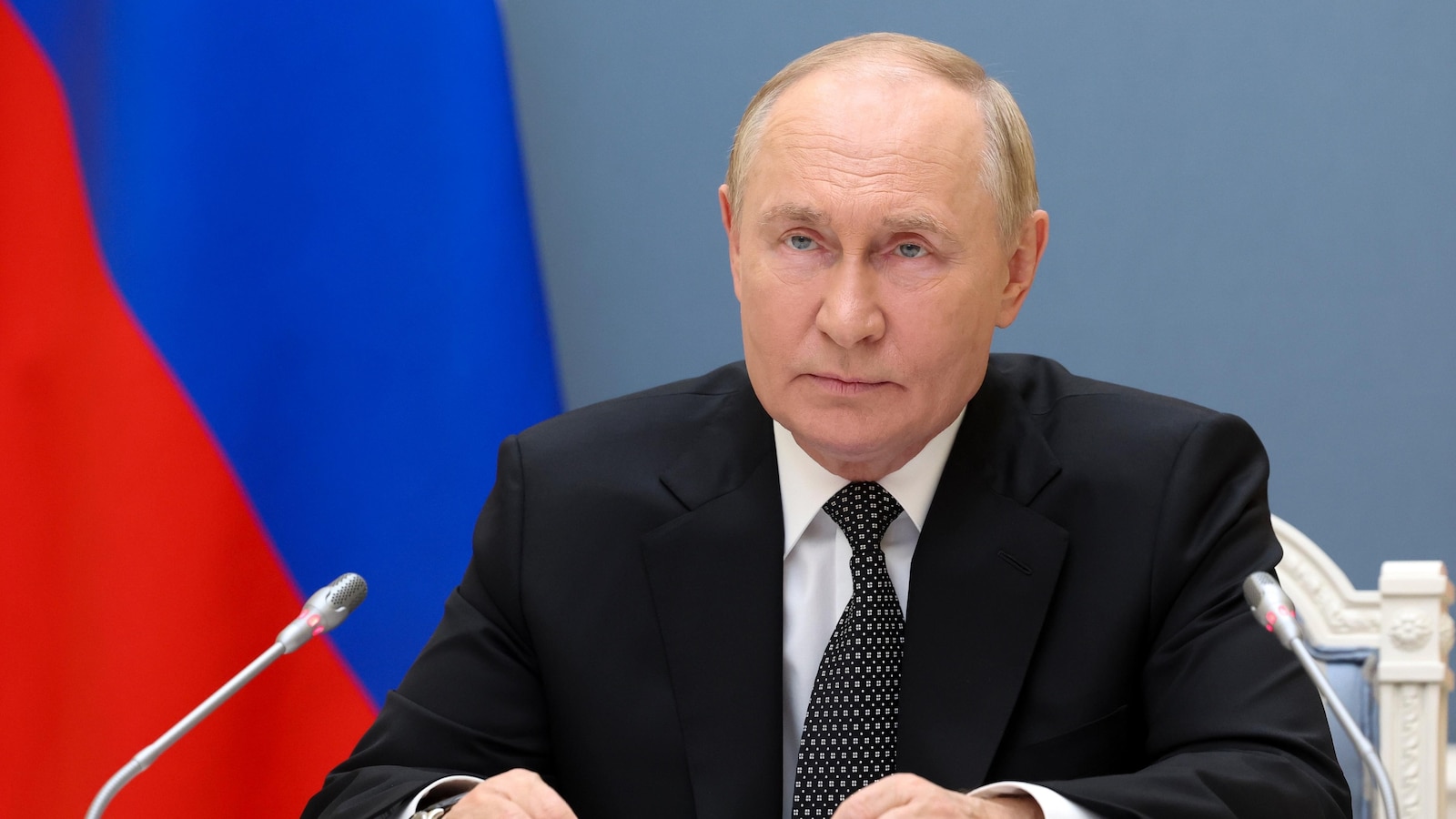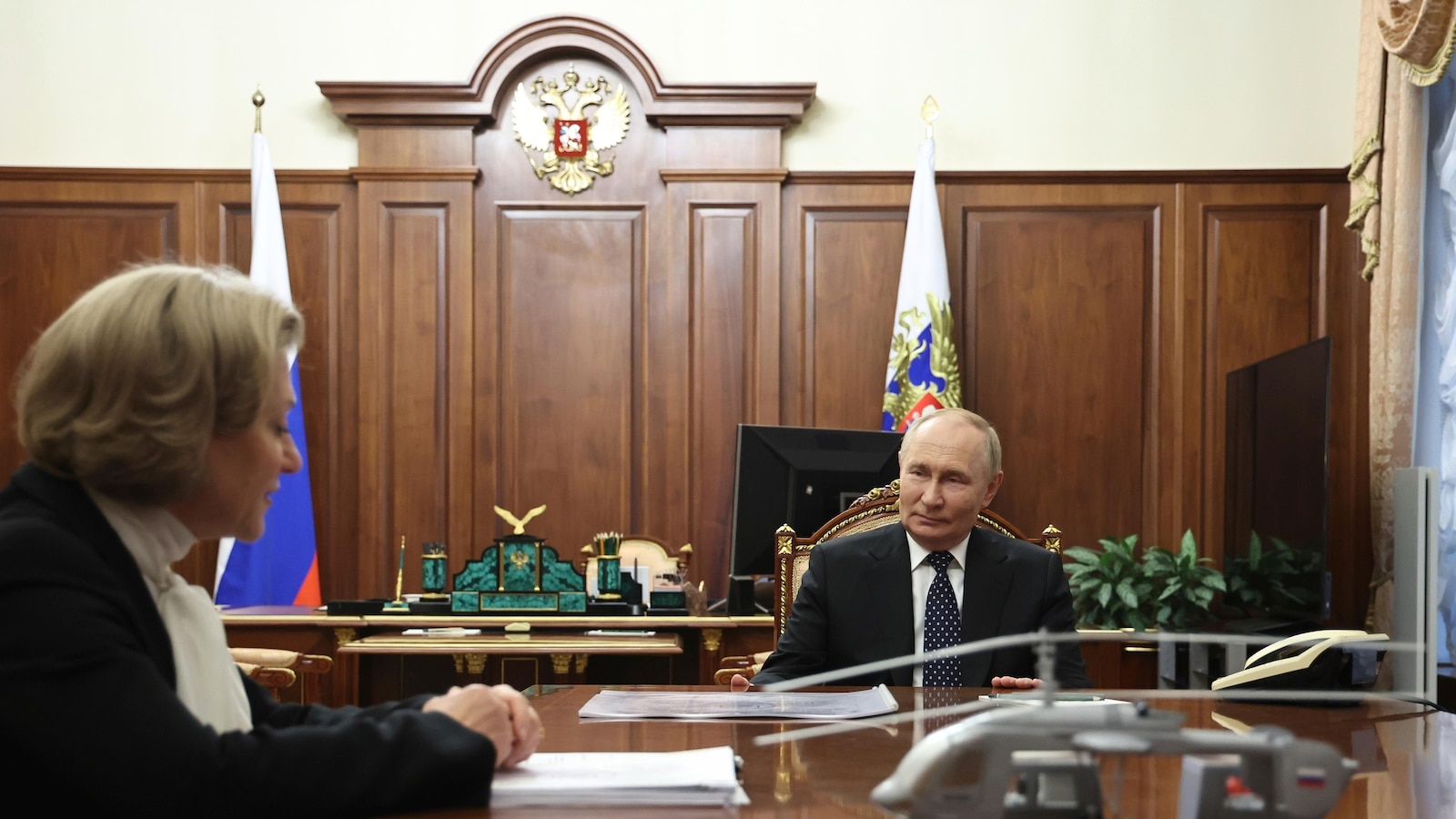
The Russian military on Tuesday launched massive naval and air drills spanning across both hemispheres and including China in joint maneuvers.
The “Ocean-24” exercise spans the Pacific and Arctic Oceans, the Mediterranean, Caspian and Baltic Seas and involves over 400 warships, submarines and support vessels, more than 120 planes and helicopters and over 90,000 troops, the Russian Defense Ministry said in a statement. The maneuvers will continue through Sept. 16, the ministry said.
Russian President Vladimir Putin said in comments to military officials that the war games are the largest of their kind in three decades, and that China’s warships and planes were taking part. China confirmed that on Monday, saying the two countries’ navies would cruise together in Pacific, but gave no details.
A total of 15 countries have been invited to observe the drills, Putin said, without naming them.
“We pay special attention to strengthening military cooperation with friendly states. Today, in the context of growing geopolitical tensions in the world, this is especially important,” Putin said.
The Russian leader accused the United States of “trying to maintain its global military and political dominance at any cost,” seeking “to inflict a strategic defeat” on Russia in its war with Ukraine and to “break the established security architecture and balance of power in the Asia-Pacific region.”
“Under the pretext of countering the allegedly existing Russian threat and containing the People’s Republic of China, the United States and its satellites are increasing their military presence near Russia’s western borders, in the Arctic and in the Asia-Pacific region,” Putin said, stressing that “Russia must be prepared for any development of the situation.”
Russia and China, along with other U.S. critics such as Iran, have aligned their foreign policies to challenge and potentially overturn the Western-led liberal democratic order.
With joint exercises, Russia has sought Chinese help in achieving its long-cherished aim of becoming a Pacific power, while Moscow has backed China’s territorial claims in the South China Sea and elsewhere.
Russia’s Defense Minister Andrei Belousov said the drills are aimed to train “repelling large-scale aggression of a potential enemy from ocean directions, combating unmanned boats, unmanned aerial vehicles, defending naval bases, conducting amphibious operations and escorting transports.”
Russia and China, two of the world’s largest military powers, have recently launched joint naval exercises in a large-scale operation that has caught the attention of global observers. The drills, which are taking place in the waters off the coast of Russia’s Far East region, mark a significant show of cooperation between the two countries and highlight their growing strategic partnership.
The joint naval exercises, known as “Naval Interaction 2021,” involve a wide range of activities including anti-submarine warfare, air defense, and live-fire drills. The goal of the exercises is to enhance coordination and interoperability between the Russian and Chinese navies, as well as to demonstrate their ability to work together in a complex maritime environment.
The timing of the joint naval exercises is significant, as it comes amid increasing tensions between Russia and the West, particularly the United States. The exercises serve as a clear message to the international community that Russia and China are capable of working together to defend their shared interests and challenge the dominance of Western powers in the Asia-Pacific region.
The joint naval exercises also reflect the deepening military ties between Russia and China, which have been steadily growing in recent years. Both countries have conducted joint military drills in various forms, including land-based exercises and air force cooperation. The naval exercises represent a new level of collaboration between the two countries and underscore their commitment to strengthening their strategic partnership.
In addition to enhancing their military capabilities, the joint naval exercises also have important geopolitical implications. By demonstrating their ability to work together effectively in a maritime setting, Russia and China are sending a clear message to other countries in the region, particularly those with competing territorial claims in the South China Sea and the East China Sea.
Overall, the joint naval exercises between Russia and China represent a significant development in the evolving global security landscape. As both countries continue to expand their military capabilities and deepen their strategic partnership, their cooperation is likely to have far-reaching implications for regional security and stability. It remains to be seen how other countries, particularly those in the West, will respond to this growing alliance between two of the world’s most powerful military powers.


